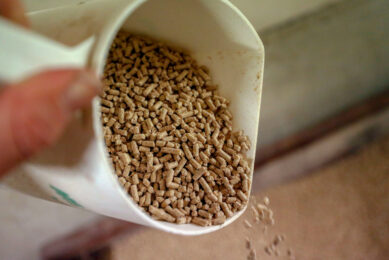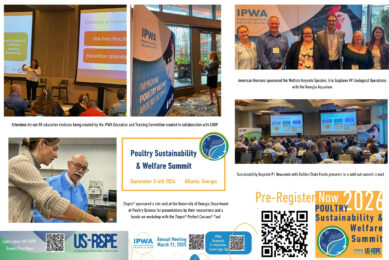Research: Predicting energy content of oil seeds in poultry
A study was carried out to predict apparent metabolisable energy content of oil seeds and oil seed by-products for poultry from its chemical components, in vitro analysis or near-infrared reflectance spectroscopy.
Regression models including chemical composition, in vitro digestibility and near-infrared reflectance spectroscopy (NIRS) were compared to predict the energy content of several feed ingredients for poultry.
The nitrogen-corrected apparent metabolisable energy content (AMEn) and its proportion on total gross energy (AMEn/GE) were determined in 52 batches of six protein concentrates; samples were randomly obtained from a poultry feed manufacturing plant throughout a 3-year period.
A preliminary trial was also designed to adapt in vitro methods for prediction of in vivo energy values for poultry.
Mean concentrations of AMEn of the ingredients studied ranged from 5.29 to 14.7 MJ/kg DM and those of AMEn/GE from 0.260 to 0.609.
The most precise model for prediction of AMEn and AMEn/GE values for the whole data analysed was that based on NIRS equations (R2cv = 0.952 and 0.926, respectively).
The best single chemical predictor was the concentration of neutral detergent fibre (NDF) in each ingredient (R2 = 0.721 and 0.736, respectively).
Further inclusion of ether extract content increased R2 to 0.945 and 0.902 for AMEn and AMEn/GE, respectively.
A model including linear and quadratic effects of in vitro organic matter digestibility (ivOMd) provided a slightly inferior prediction of AMEn/GE values (R2 = 0.865).
However, the prediction of AMEn from ivOMd was clearly lower (R2 = 0.756), as variations among batches of GE concentration (from 19.0 to 24.9 kcal/kg DM) were poorly related to in vitro digestibility values.
All the indirect methods used were useful to explain part of the variability of the energy value of the ingredients studied, although the best results were generally obtained from the NIRS equations.
Otherwise, the significance of the prediction depended directly on the variability of the different data set studied.
Full report of this study is available from ScienceDirect.












